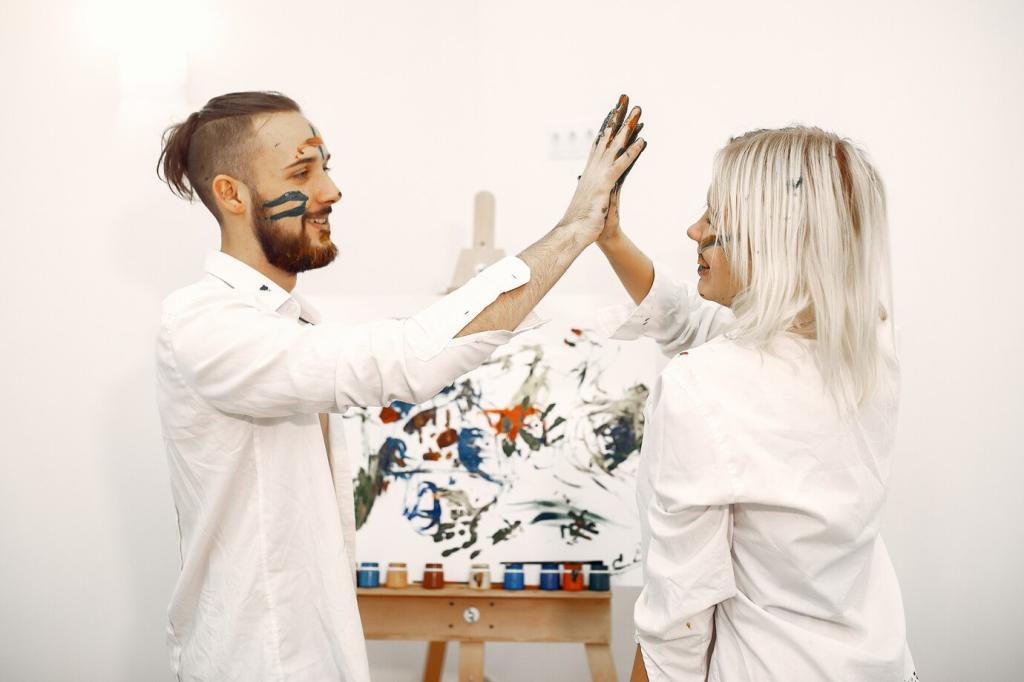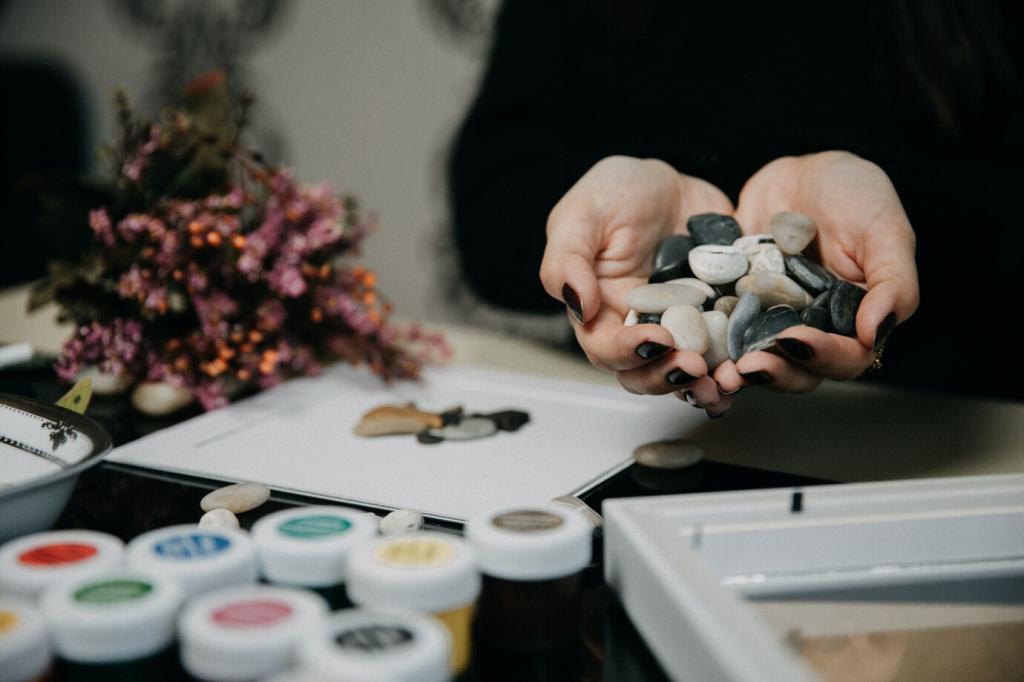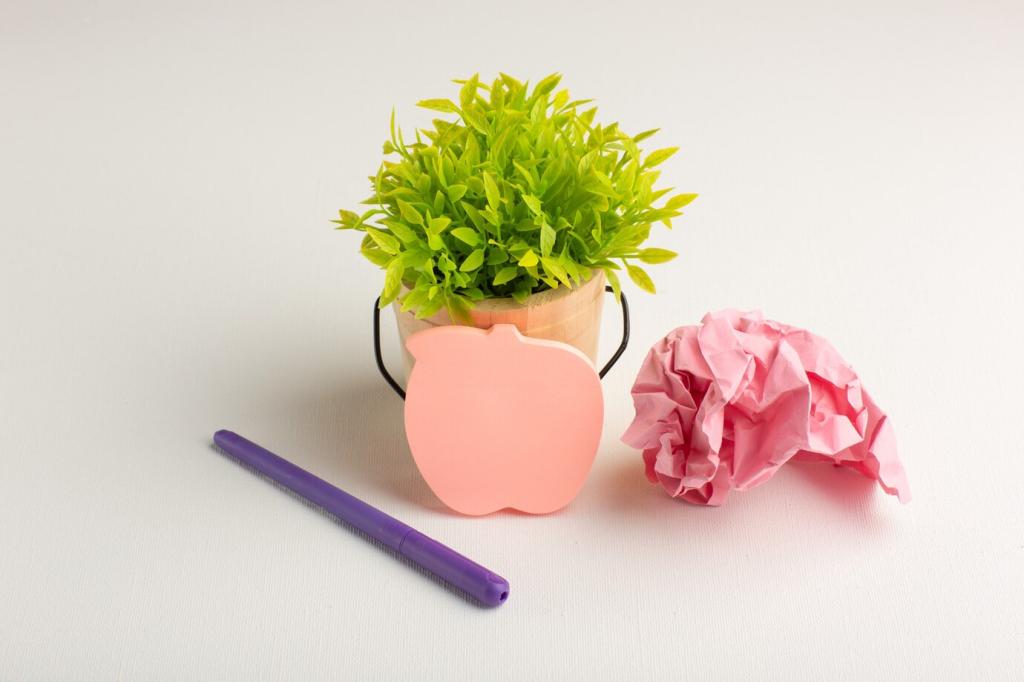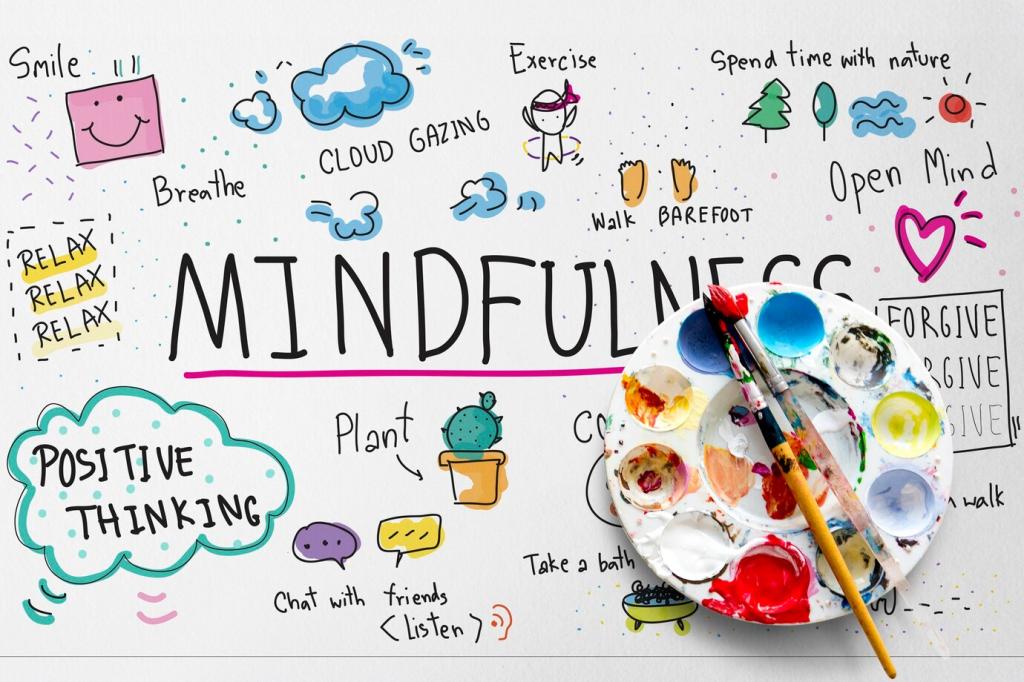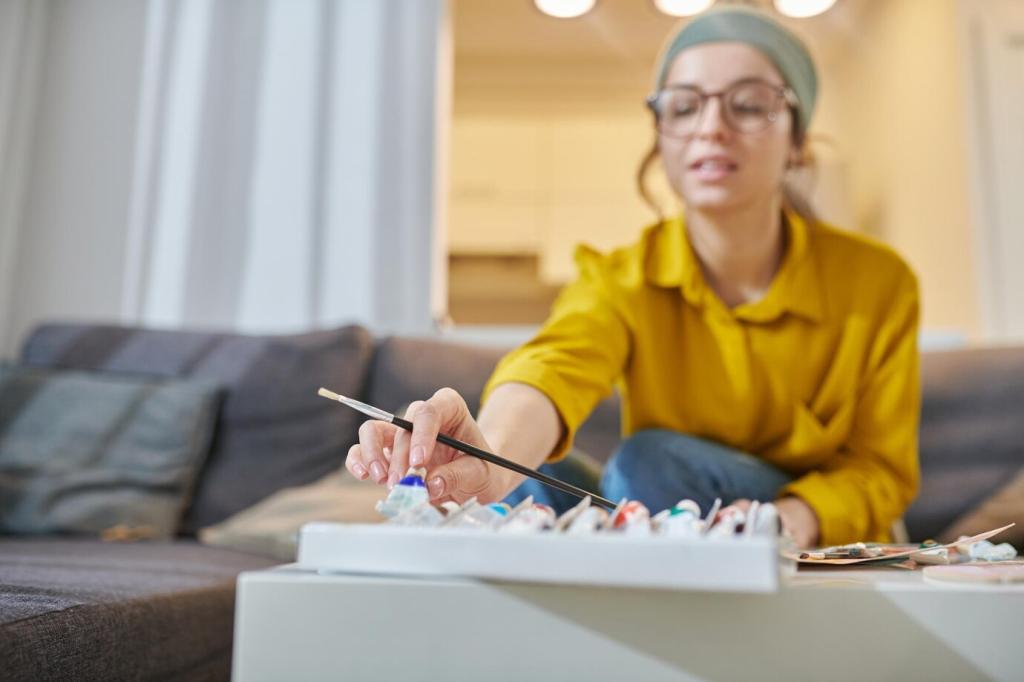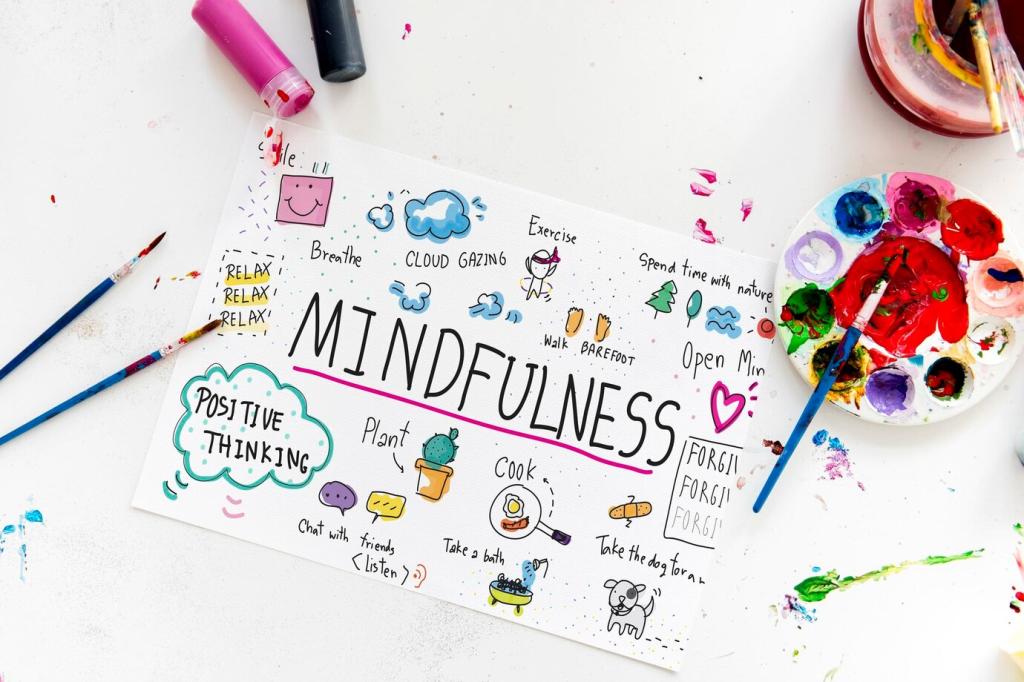Quick Techniques You Can Start Today
Match your pen to your breath: inhale, draw a slow upward curve; exhale, let it fall. Repeat across the page, letting lines overlap like waves. The visual rhythm mirrors your breathing pattern, gently reinforcing steadiness without forcing control.
Quick Techniques You Can Start Today
Choose a calming color—soft blue, moss green, or lavender. With each inhale, load pigment; with each exhale, spread it outward in widening halos. Notice how pressure lightens as your shoulders drop, creating gradients that echo your easing mood.

